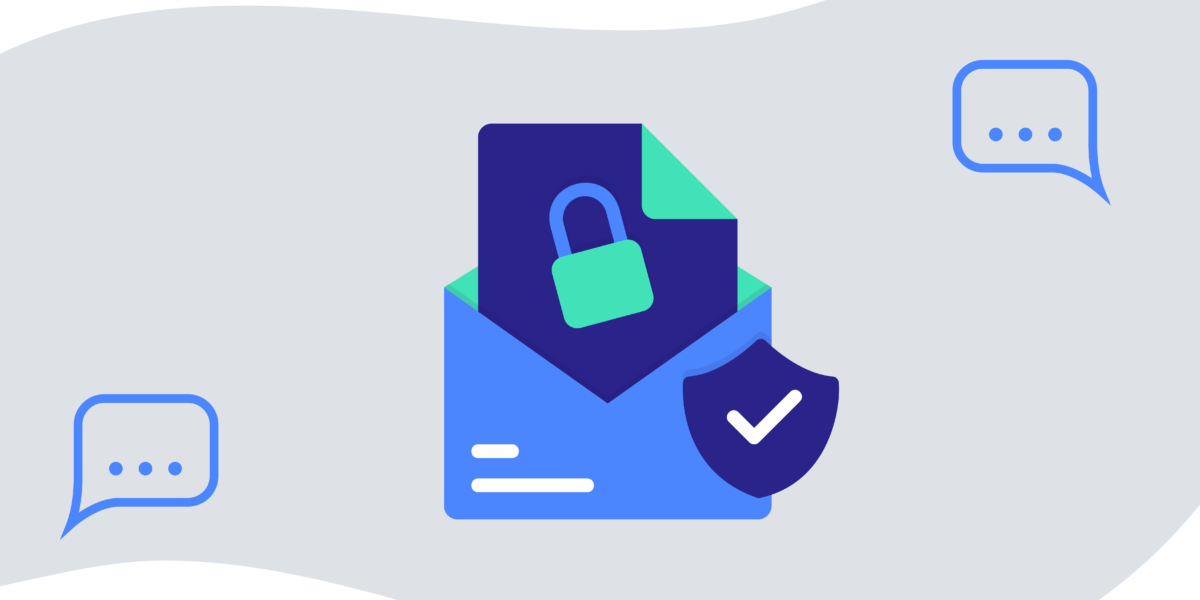Unlike other email security protocols, DMARC policy options let you specify how receivers should deal with unauthenticated messages. It’s a powerful standard for protecting your domain.
Below, we’ll walk you through everything you need to know about DMARC policy options and how to reach enforcement.
What is DMARC policy?
Many how-to articles tout the benefits of DMARC without mentioning a crucial step: Enforcement.
A key part of the DMARC (Domain-based Message Authentication, Reporting, and Conformance) standard is that it gives domain owners the ability to specify a policy for how they’d like receivers to handle email messages that fail authentication.
With an enforcement DMARC policy, domain owners can tell receivers to put unauthenticated messages in the spam folder or reject them entirely—effectively blocking impersonators.
Without enforcement, domain owners still get some data on who’s spoofing them, but they just watch those impersonators continue to wreak havoc without doing anything to stop them.
A DMARC record without enforcement is like a bouncer at the front door who checks everyone’s ID—but then lets everyone in regardless of whether they’re on the guest list or not.
DMARC policy options
Unlike SPF or DKIM, which leave it up to the receivers (mail gateways and servers) to decide how to handle authentication failures, DMARC actually lets the domain owners specify what they want to happen.
In the simplest configurations, the DMARC policy is spelled out with the “p” parameter, for which there are three options:
- p=none — No enforcement; mail that fails authentication is delivered normally.
- p=quarantine — Messages that fail authentication should be quarantined. Usually, this means that the messages are delivered to a user’s spam folder.
- p=reject — Messages that fail authentication should be discarded, not delivered at all. Some receivers honor this request, while others just mark failing messages as spam.
Note that p=none, or “monitor mode,” provides no enforcement. Fraudulent messages using your domain will still be delivered. This setting is intended as a “test” mode so that domain owners can troubleshoot their authentication settings without the risk of legitimate messages getting blocked.
In p=none mode, domain owners can use the reports sent by mail gateways to examine what messages are being blocked and which IP addresses are sending those messages. (turning DMARC reports into actionable insights is a challenge all its own).
Armed with that information, the domain owner can then make changes to their SPF and/or DKIM settings and potentially to the domain(s) being used by the messages, to ensure that legitimate messages authenticate.
Why DMARC enforcement matters
If your goal is to stop phishing and impersonation attacks, you need to get to enforcement, not remain at p=none indefinitely. A setting of p=none generates a lot of potentially useful raw data. But it’s only with a policy of quarantine or reject that you will begin to see the anti-impersonation and anti-phishing benefits of DMARC.
At enforcement—p=quarantine or p=reject—the only mail using your domain that gets through is the mail you have authorized. Everything else is sent to spam or deleted without being delivered.
DMARC at enforcement can help with deliverability. ISPs that make delivery decisions based on the sending domain’s reputation will consider your DMARC status. We’ve seen customers whose marketing campaigns’ delivery rates increased by as much as 5 to 10 percent when they moved to an enforcement policy.
Unfortunately, most companies that attempt DMARC don’t actually get to enforcement. In our research, Valimail has found that an average of 75 to 80 percent of domains that have published a DMARC record are unable to get to enforcement. That means they either had configuration errors or, more commonly, had simply gotten stuck at p=none—often for months or even years.
Staying in monitor mode, at a DMARC policy of p=none, provides the same protection as if you had no DMARC record.
Getting to enforcement is where the real benefits of email authentication kick in. Without it, you’re just collecting more data.
Check your DMARC policy for free
Is your domain enforcing email authentication and protecting you from impersonation attacks?
Find out with our free, real-time domain checker.
It’ll check to ensure your DMARC policy is appropriately configured for your domains.
